Disclosure: This article contains affiliate links. We may earn a commission from purchases at no extra cost to you, which helps our travel content.
When I first visited Hakone as a finance professional seeking respite from spreadsheets and quarterly reports, I discovered something remarkable: a transportation system that isn't just functional—it's an experience portfolio with dividends of joy for every family member. Nestled in the mountains west of Tokyo, Hakone offers what I call a 'diversified transport portfolio'—trains hugging mountainsides, cable cars soaring over volcanic valleys, and boats crossing a lake that reflects Mount Fuji on clear days. As someone who analyzes systems for a living, I was impressed by how these transit options weave together seamlessly while showcasing Japan's precision engineering and cultural attention to detail. For families looking to maximize their return on travel investment, Hakone's transportation network isn't merely how you get around—it's why you come. This spring weekend itinerary breaks down the essential routes, costs, and experiences that make Hakone's transit system the perfect family adventure.
The Hakone Free Pass: Your Financial Key to Transport Freedom
As a finance analyst, I'm always looking for value propositions that maximize returns while minimizing costs. The Hakone Free Pass is precisely that kind of investment. This comprehensive ticket covers your round-trip journey from Tokyo to Hakone and, crucially, unlimited use of the region's transport network for 2 or 3 days.
When I visited last spring with my college friends and their children, I calculated that we each saved approximately 3,500 yen (about $32) by purchasing the pass instead of individual tickets—a 40% return on investment for our weekend activities. For a family of four, those savings compound significantly.
The pass covers: - The Odakyu Line from Shinjuku to Hakone-Yumoto - The scenic Hakone Tozan Railway (mountain railway) - The Hakone Tozan Cable Car - The Hakone Ropeway (aerial tramway) - The Hakone Sightseeing Cruise ships - Multiple bus lines throughout the region
Purchasing is straightforward at Shinjuku Station's Odakyu Sightseeing Service Center, but I recommend buying online in advance during peak spring season when cherry blossoms draw crowds. I use the Japan travel guidebook to plan optimal routes, as it contains detailed transport maps that helped us navigate efficiently while highlighting scenic spots along each route.
The real value of the pass extends beyond mere financial calculations. It transforms your mindset from 'should we take this scenic detour?' to 'why not explore this additional route?' since the marginal cost is zero. This freedom to explore without watching the meter run is particularly valuable when traveling with children, whose enthusiasm for another boat ride or cable car journey can be accommodated without budget concerns.
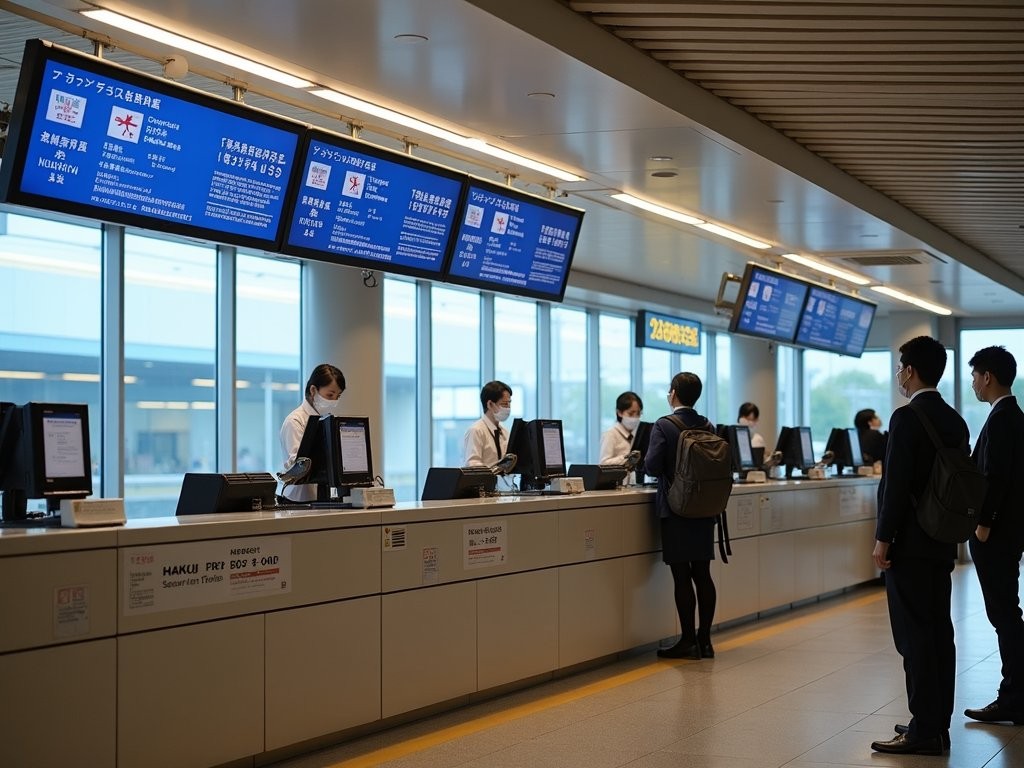
💡 Pro Tips
- Purchase the Hakone Free Pass online before your trip to avoid lines at Shinjuku Station
- The 2-day pass is sufficient for most weekend trips, but spring cherry blossom season might warrant the 3-day option for flexibility
- Take a photo of the pass on your phone as backup in case of loss
The Hakone Tozan Railway: Japan's Most Scenic Switchback Train
The Hakone Tozan Railway embodies what financial analysts call a 'legacy asset'—a historic investment that continues to deliver value through changing times. As Japan's oldest mountain railway, this engineering marvel from 1919 climbs 340 meters through forested mountains using a series of switchbacks where the train reverses direction to navigate the steep gradient.
During our spring visit, the train windows framed a progression of seasonal transformation: early cherry blossoms at lower elevations giving way to budding trees higher up—nature's own diversified portfolio of flora. The children in our group were mesmerized by the train's switchback maneuvers, where the driver and conductor physically change positions to reverse the train's direction.
From Hakone-Yumoto to Gora, the journey takes approximately 40 minutes, stopping at several charming mountain villages worth exploring. My Tlingit grandmother always taught me that journeys should be measured not in miles but in moments of wonder, and this train ride delivers those in abundance.
The most picturesque section lies between Hakone-Yumoto and Miyanoshita stations, where the train crosses the vermillion Hayakawa Bridge. This spot offers what photographers call 'high-yield image potential'—especially in early morning light when the valley is often shrouded in mist. I captured stunning photos using my travel camera, which performs exceptionally well in the variable lighting conditions you'll encounter through the train windows.
For families, I recommend boarding at Hakone-Yumoto Station early (before 9 AM) to secure seats on the right side of the train for the best views. During hydrangea season (June), this railway transforms into the famous 'Hydrangea Train' with thousands of blooms lining the tracks—a natural dividend that requires no additional investment beyond your Hakone Free Pass.
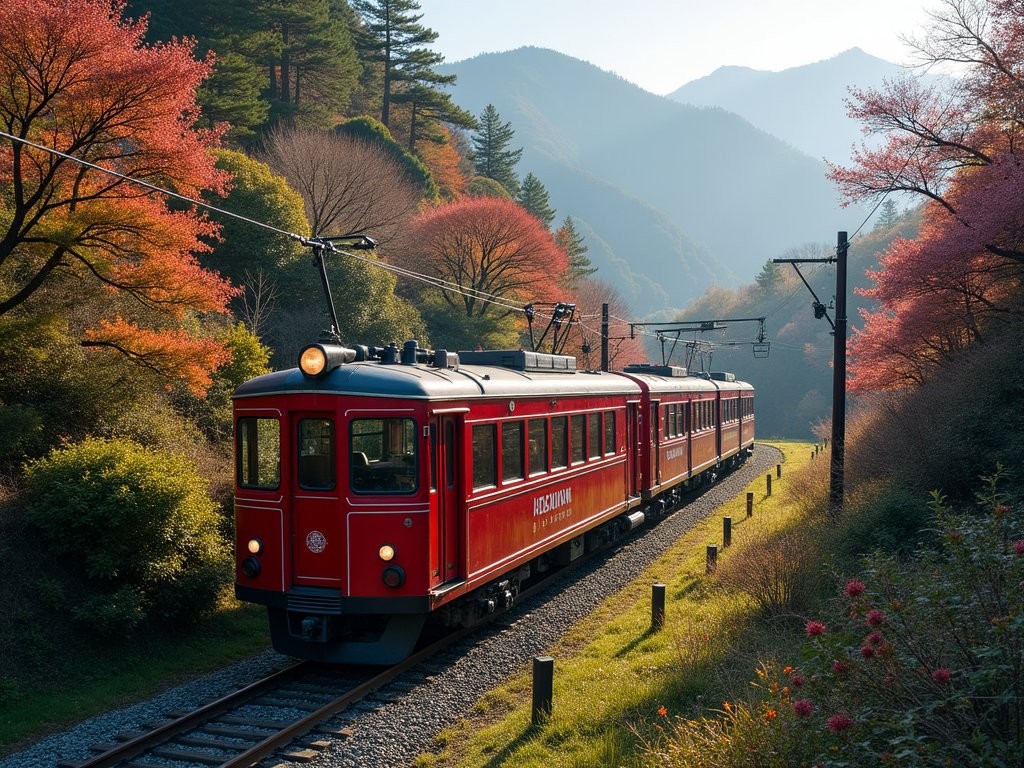
💡 Pro Tips
- Board at Hakone-Yumoto Station before 9 AM to avoid crowds and secure window seats
- Choose right-side seats when heading uphill for the best views of valleys and waterfalls
- Visit in June to see the famous hydrangeas blooming alongside the tracks
Soaring Above Owakudani: The Hakone Ropeway Experience
If the Tozan Railway represents Hakone's traditional transport portfolio, the Hakone Ropeway is its growth-oriented modern counterpart. This aerial tramway system spans 4 kilometers across some of Hakone's most dramatic volcanic landscapes, offering what I consider the highest 'view-to-effort ratio' of any transport option in the region.
The ropeway journey begins in Sounzan (connected to Gora by the cable car) and continues to Togendai on Lake Ashi, with the most spectacular segment passing over Owakudani—an active volcanic valley where sulfurous vents create an otherworldly landscape that my friend's 8-year-old described as 'like visiting another planet.'
During my spring visit, I witnessed the fascinating juxtaposition of snow-capped Mount Fuji in the distance while steam rose from the volcanic vents below—a reminder of the geological forces that shaped this region. The gondolas provide 360-degree views through large windows, making this an excellent photography opportunity regardless of where you're seated.
The ropeway makes a significant stop at Owakudani Station, where families should plan to disembark and explore. Here, you'll find observation decks and short walking trails that offer close-up views of the volcanic activity. The area's famous black eggs (kuro-tamago) are a must-try cultural experience—eggs boiled in the naturally sulfurous hot springs that turn the shells black. Local tradition holds that eating one adds seven years to your life—what I call a longevity dividend with minimal investment.
For families with young children or elderly members, I recommend bringing a travel daypack to carry water, snacks, and layers for the variable temperatures you'll experience between the valley and mountain stations. The sulfur smell at Owakudani can be strong, so those with respiratory sensitivities might want to bring masks.
From a logistics perspective, the ropeway operates from 9 AM to 5 PM (with seasonal variations), with gondolas departing every minute during peak hours. Even during spring's busiest weekends, we rarely waited more than 15 minutes—an efficient use of valuable vacation time compared to many other tourist attractions.

💡 Pro Tips
- Visit Owakudani on clear mornings for the best chance of Mount Fuji views
- Try the famous black eggs at Owakudani—they're a cultural experience that children find fascinating
- Bring layers as temperatures at the higher ropeway stations can be 5-8°C cooler than at lake level
Crossing Lake Ashi: The Hakone Sightseeing Cruise
After descending from volcanic heights via the ropeway to Togendai, the next asset in Hakone's transport portfolio awaits: the Hakone Sightseeing Cruise across Lake Ashi. These distinctive vessels—replicas of European medieval warships complete with ornate decoration—offer what I consider the perfect balance sheet of transportation function and tourist experience.
During my spring visit with friends and their children, this cruise quickly became the highlight for the younger travelers. There's something undeniably theatrical about crossing a Japanese lake on a ship that looks like it sailed straight out of a European fairy tale. This cultural juxtaposition creates what marketers would call 'high memorability value'—the kind of unusual experience that remains in family photo albums and conversations for years.
The standard route crosses from Togendai to Hakone-machi and Moto-Hakone, taking approximately 30 minutes. While the ships may appear fanciful, their operation reflects typical Japanese efficiency. Departures are punctual and frequent (approximately every 30-40 minutes), allowing flexible planning.
Lake Ashi (Ashinoko) itself was formed in the caldera of Mount Hakone after its last eruption 3,000 years ago. Now, it's renowned for providing one of Japan's classic views: when weather conditions align, Mount Fuji reflects perfectly in the lake's still waters. Spring offers particularly good odds for this view, as I discovered when we lucked into a perfectly clear morning.
For families, the upper deck provides the best experience—fresh air, 360-degree views, and enough space for children to move around safely. I recommend bringing a compact binoculars to spot details along the shoreline and wildlife on the water. These became an unexpected hit with the children, who took turns scanning for birds and distant landmarks.
At Moto-Hakone port, don't rush to the next transport connection. This charming area warrants exploration, particularly the short walk to view the famous 'Hakone Shrine' red torii gate standing in the water—an iconic photo opportunity that combines cultural and natural elements in one perfectly balanced composition.
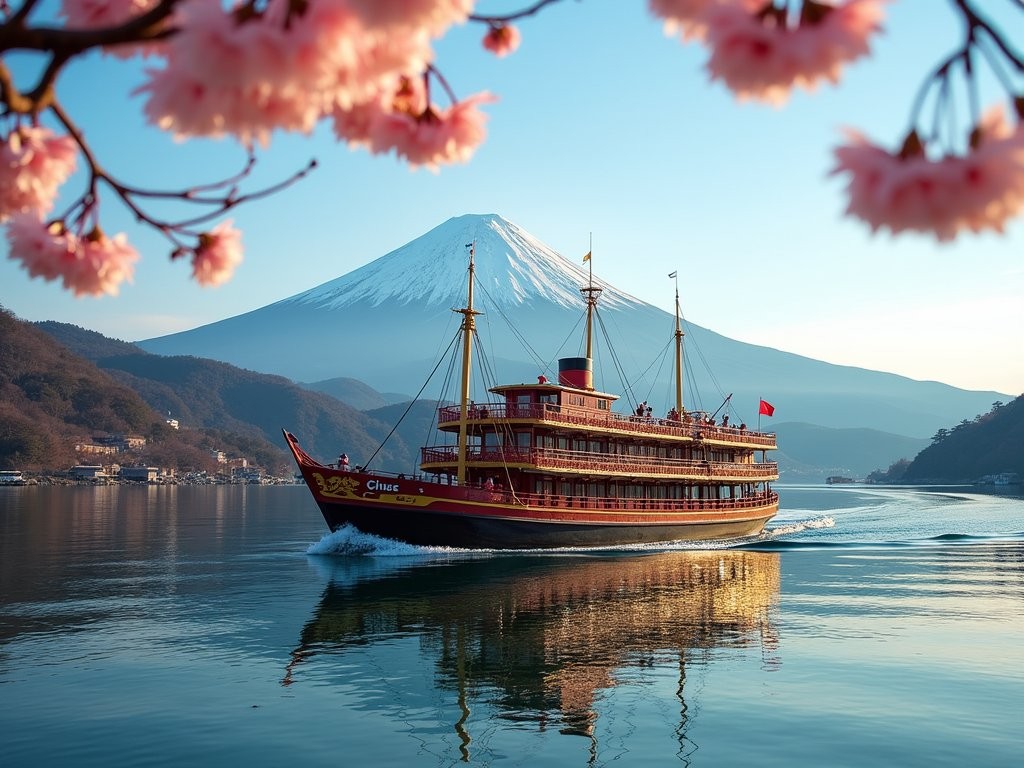
💡 Pro Tips
- Time your lake crossing for early morning when winds are calmest and Mount Fuji visibility is highest
- Don't rush off the boat at arrival—the best photos are often captured from the deck as you approach the ports
- Visit Hakone Shrine's famous red torii gate in the water near Moto-Hakone port
The Hakone Tozan Bus: Connecting the Transport Ecosystem
While less glamorous than mountain railways and pirate ships, the Hakone Tozan Bus network represents what financial analysts would call the 'connective infrastructure' that makes the entire transport ecosystem function efficiently. These buses fill gaps between rail and water routes, providing access to attractions, hotels, and onsen (hot springs) throughout the region.
During my spring weekend in Hakone, I found the bus system particularly valuable for reaching the Hakone Open-Air Museum—a magnificent sculpture park where children can interact with art installations while adults appreciate works by Picasso, Henry Moore, and other masters. The T bus from Togendai or H bus from Hakone-Yumoto provides direct access.
For families staying overnight in Hakone (which I highly recommend for a complete experience), the evening bus services are essential for reaching restaurants and accommodations after the more tourist-oriented transport options have ceased operations. Most buses run until approximately 8 PM, with reduced frequency in evening hours.
Navigating the bus system initially seemed daunting, especially with Japanese-language destination boards. However, I discovered two valuable tools that transformed our experience. First, the Hakone Free Pass includes a detailed bus route map that identifies key stops in both Japanese and English. Second, Google Maps works remarkably well for Hakone bus routes, displaying accurate departure times and stop locations.
From a practical perspective, buses can become crowded during peak spring weekends. I recommend traveling with a packable daypack that can be easily stowed on your lap during crowded rides. This ultralight bag packs into a small pouch when not needed but expands to hold souvenirs, snacks, and extra layers when required.
One insider tip I discovered: bus drivers in Hakone are exceptionally helpful to foreign visitors. Even with limited English, they often announce major tourist destinations in both Japanese and English, and will signal to you when your requested stop is approaching. This attention to customer service reflects the omotenashi (Japanese hospitality) philosophy that makes traveling in Japan so pleasant, even when language barriers exist.
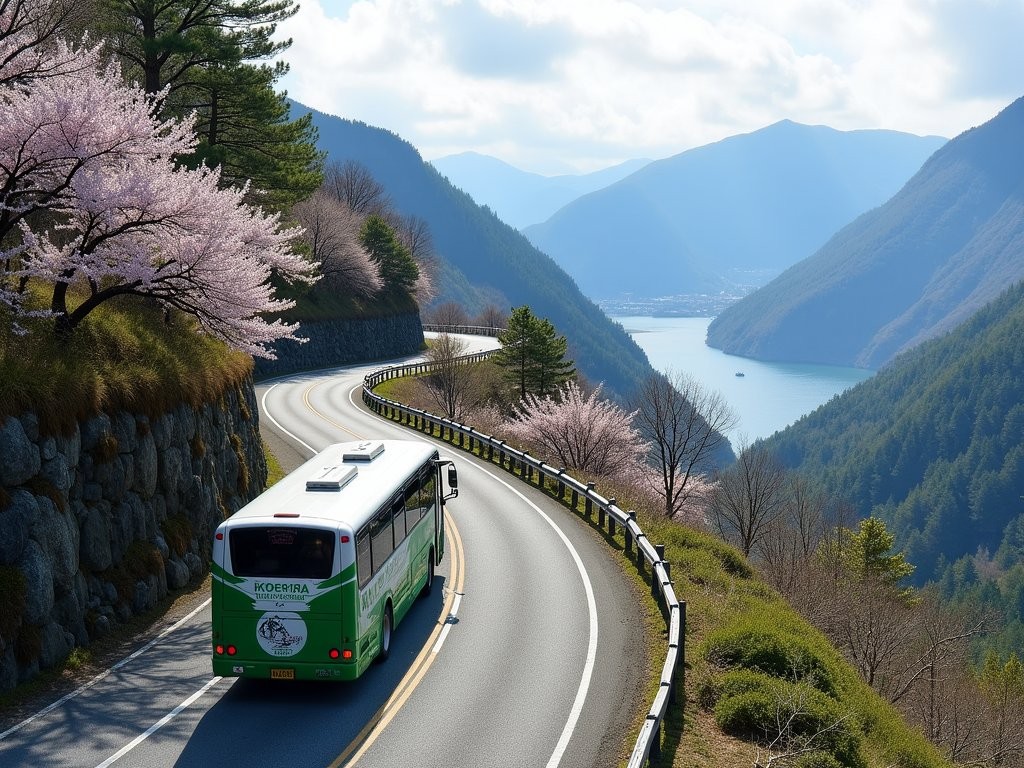
💡 Pro Tips
- Download the Japan Transit Planner app for real-time bus schedules and route planning
- Sit on the right side of buses traveling from Togendai to Hakone-Yumoto for the best lake views
- Have your Hakone Free Pass ready when boarding—you'll need to show it to the driver
Family-Friendly Transport Tips: Maximizing Comfort and Enjoyment
After multiple visits to Hakone—first as a solo traveler seeking wellness retreats and later with friends and their families—I've developed what I call a 'family transport optimization strategy' that maximizes enjoyment while minimizing stress.
First, timing is everything. Hakone's transport system experiences predictable congestion patterns that can be avoided with strategic planning. The Hakone Tozan Railway and Ropeway see peak crowds between 10 AM and 2 PM, particularly on weekends and holidays. By starting your journey from Shinjuku on the 7:30 AM Odakyu Romance Car (a premium limited express train worth the small surcharge for comfort and views), you'll reach Hakone-Yumoto by 9 AM and stay ahead of the main crowds throughout the day.
For families with younger children, I recommend what financial planners call 'strategic resource allocation'—specifically, scheduling your most desired transport experiences during your children's peak energy hours. Save the Hakone Sightseeing Cruise and Ropeway (the most visually engaging options) for when children are most alert, and use the more routine bus connections during potential low-energy periods.
Packing appropriately transforms the transport experience. Beyond the standard recommendations, I've found a travel neck pillow invaluable for children (and adults) on the longer train journeys. The unique chin support design prevents the head from falling forward when napping, making the return journey to Tokyo more restful after a day of exploration.
Regarding luggage, Hakone's transport system isn't designed for large suitcases. If staying overnight, I strongly recommend using Japan's efficient luggage forwarding service (takuhaibin) to send larger bags directly to your next destination while carrying just overnight essentials in a backpack. Most major hotels in Tokyo can arrange this service for approximately 2,000 yen per bag.
For families with diverse mobility needs, it's important to note that while newer stations are wheelchair and stroller accessible, some historical transport options have limitations. The Hakone Tozan Railway stations at Miyanoshita, Kowakidani, and Chokoku-no-Mori have steps and limited accessibility features. However, staff are unfailingly helpful in providing assistance when notified in advance.
Finally, embrace the Japanese concept of yoyū—margin or leeway in scheduling. Rather than planning to use every transport option in a single day, build flexibility into your itinerary. This approach creates space for unexpected discoveries, weather changes, or simply enjoying a particular location longer than anticipated—often the moments that become cherished family memories.

💡 Pro Tips
- Purchase reserved seats on the Odakyu Romance Car for the most comfortable journey from Tokyo to Hakone
- Use luggage forwarding services if staying overnight to avoid carrying large bags on Hakone's transport network
- Download the Hakone Free Pass app for real-time updates on any transport delays or weather-related closures
Final Thoughts
Hakone's transport network represents what I've come to call a 'complete experience portfolio'—a perfectly balanced blend of efficiency, cultural heritage, and natural beauty that delivers consistent returns in the form of family memories. The circular route linking train, cable car, ropeway, boat, and bus creates not just a practical way to navigate the region, but a journey that becomes the destination itself. As someone who spends my professional life analyzing systems and returns, I find Hakone's transport network to be the rare example where practical function and meaningful experience achieve perfect equilibrium. When you plan your family's spring weekend in Hakone, remember that the true value lies not in checking off destinations, but in the moments between—the child's face pressed against the train window as it navigates a switchback, the shared wonder as your gondola emerges from volcanic steam to reveal Mount Fuji, or the laughter as you pose for photos on a whimsical 'pirate ship' crossing a Japanese lake. These are the dividends that appreciate over time in ways no financial instrument can match.
✨ Key Takeaways
- Purchase the Hakone Free Pass for unlimited access to the complete transport network and significant cost savings
- Start early (before 9 AM) to experience the transport options with smaller crowds and better views
- Structure your route clockwise (train→cable car→ropeway→boat→bus) for the most efficient flow
- Allow time for spontaneous stops and explorations rather than rushing between transport connections
📋 Practical Information
Best Time to Visit
Spring (late March to early June) for pleasant temperatures and seasonal blooms
Budget Estimate
$250-350 per person for a weekend including transportation, accommodation, meals, and activities
Recommended Duration
2 days/1 night minimum, 3 days/2 nights ideal
Difficulty Level
Easy
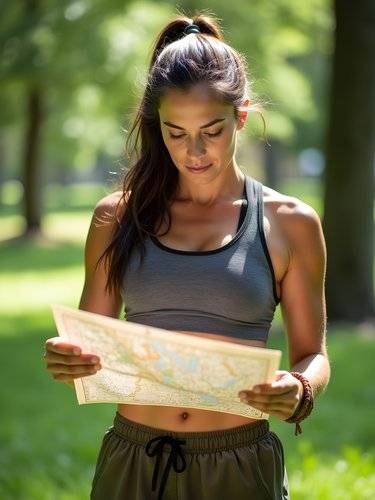
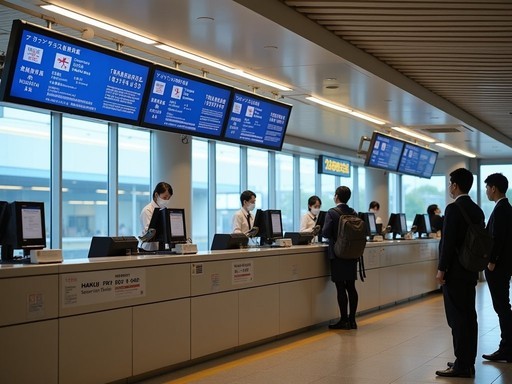
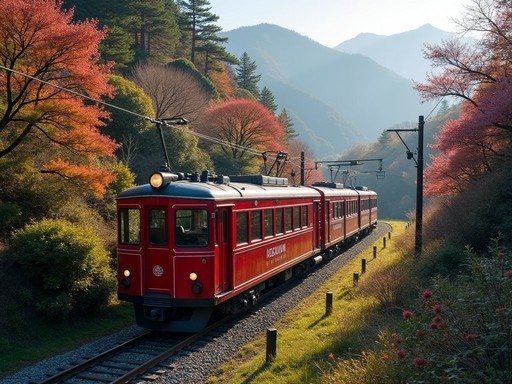
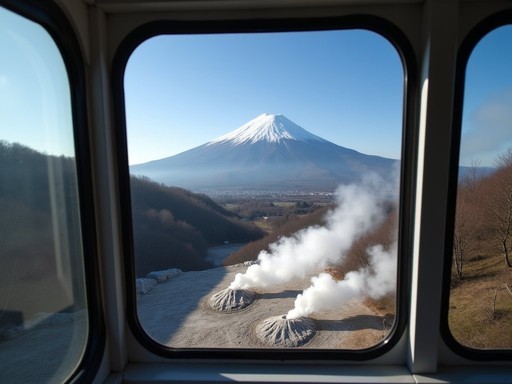

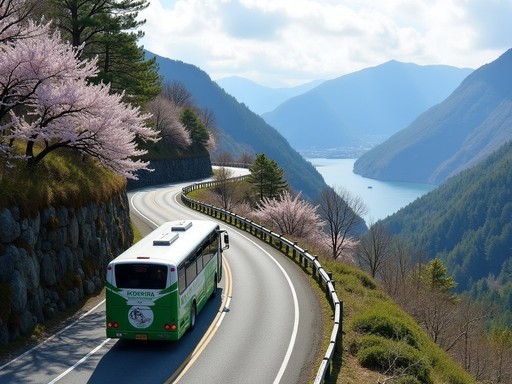
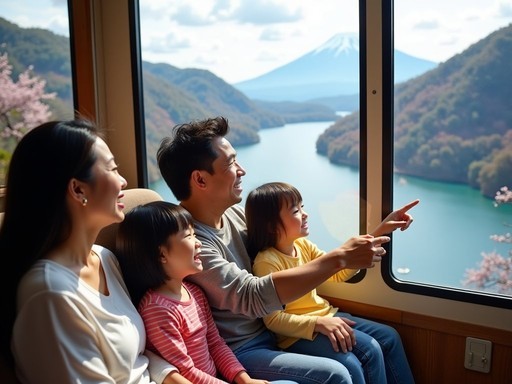


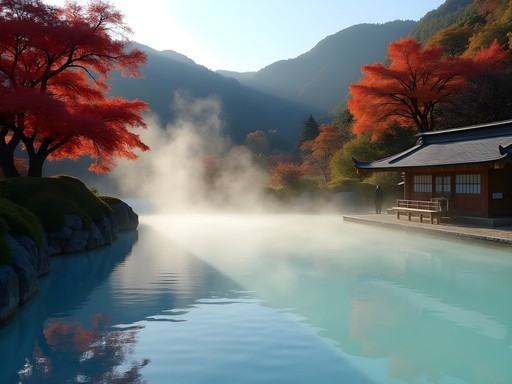







Comments
skylover
Those ropeway views are incredible! Can't wait to try it myself.
adventurehero
Just got back from Hakone last month and the transportation system there is truly something else! The Hakone Free Pass was absolutely worth every yen - we used it constantly over 2 days. That switchback train was my favorite part - watching it zigzag up the mountain was mesmerizing. We actually timed our visit to catch the last boat across Lake Ashi at sunset and the views of Mt. Fuji were incredible. Riley's right about the 'complete experience portfolio' - it's efficient but also an attraction in itself!
coolwalker
How crowded was it? Thinking of going during cherry blossom season.
adventurehero
It wasn't too bad in October, but I've heard cherry blossom season gets pretty packed. Maybe try weekdays if possible?
Bryce Diaz
Riley, your finance background really shows in how you analyzed the value of the Hakone Free Pass - love that perspective! I visited Hakone last winter and have a story to add: the day I rode the switchback train, snow started falling heavily halfway up the mountain. The conductor announced we'd be the last train of the day before they closed the route. Watching the landscape transform from autumn colors to winter white while zigzagging up the mountain was magical - felt like I was traveling between seasons! For anyone visiting in winter, I recommend bringing good boots as the observation areas around Owakudani can get slippery. The sulfur steam against the snow creates an otherworldly atmosphere that's worth experiencing.
Riley Miller
What an incredible experience, Bryce! I've only visited in spring and autumn, but your winter description makes me want to plan a December trip. That contrast of snow against the volcanic steam must be stunning.
escapelife
Planning my first Japan trip and Hakone is definitely on my list! Is it easy to navigate with limited Japanese language skills? Also wondering if the Japan Rail Pass covers any of these routes or if the Hakone Pass is separate?
luckyfan
Not the author, but I can tell you it's super easy to navigate even with zero Japanese! All signs are in English and staff at major stations speak enough English to help. The JR Pass doesn't cover Hakone local transport - you need the separate Hakone Free Pass.
wildking
Those photos of the ropeway are amazing! Can't wait to try this next year!
luckyfan
Just got back from Hakone last week and your post is spot on! The switchback train was such a unique experience - we sat on the right side going up for the best views. One tip I'd add is to start early to avoid crowds at the ropeway. We arrived at Owakudani around 9:30am and had no wait for the black eggs! By noon, the lines were crazy. The pirate ship on Lake Ashi was a bit touristy but my kids loved it!
wildking
Did you stay overnight or do it as a day trip?
luckyfan
We stayed one night at a ryokan with an onsen - totally worth it! Made the whole experience much more relaxed.
vacationnomad
Great post! I'm planning to visit Hakone in October with my elderly parents. How accessible is the ropeway for people with mobility issues? Also, is the Free Pass worth it if we're only staying one day?
Riley Miller
Thanks for reading! The ropeway is fairly accessible - staff are very helpful with boarding. For one day, the Free Pass is still worth it if you plan to do the full circuit (train + ropeway + boat). You'll break even after just 2-3 segments!
vacationnomad
That's super helpful, thanks Riley! Will definitely get the pass then.
Lillian Diaz
Great post! One tip for budget travelers: if you're staying in Hakone for 2+ days, bring some snacks and a water bottle. Food near the tourist spots can be pricey. Also, download the Hakone transport app - it has real-time updates for all the different transport modes, which saved me when the ropeway temporarily closed due to wind. The best views of Fuji are typically in early morning or late afternoon when the air is clearest!
springhero
Thanks for the app tip! Downloading it now for our trip next week.
explorestar8361
OMG those photos of the ropeway over the volcanic valley are AMAZING!! Can't wait to see it in person next month! 😍
Bryce Diaz
Riley, your description of the Hakone transport network as a 'complete experience portfolio' is spot on! When I visited last autumn, I was blown away by how the journey itself became the destination. The Tozan Railway's switchbacks through the autumn foliage were magical - I'd recommend anyone visit in late November if possible. One thing I'd add about the Hakone Free Pass - if you're coming from Tokyo, get the version that includes the round trip on the Odakyu Line. It's only about 1000 yen more and saves you having to buy separate tickets. Also, the little local buses that are included with the pass are perfect for reaching some of the more hidden onsen areas away from the main tourist spots. Great post!
hikingking
Thanks for the autumn tip! Just changed my plans from September to November based on this!
Venture X
Premium card with 2X miles, $300 travel credit, Priority Pass